
Litchfield National Park: Australia's Natural Wonderland
Discover the enchanting waterfalls, lush forests, and striking landscapes of Litchfield National Park, a natural paradise just a short drive from Darwin in Australia's Northern Territory.
Litchfield National Park is a stunning natural reserve located in the Northern Territory of Australia. It is renowned for its breathtaking waterfalls, lush monsoon forests, and unique rock formations. Visitors can explore a wide variety of landscapes, from serene waterholes to rugged escarpments, all within a short drive from Darwin. One of the park's highlights is its numerous waterfalls, including the spectacular Florence Falls, Wangi Falls, and Tolmer Falls. Each offers a refreshing escape from the tropical heat, with opportunities to swim in crystal-clear plunge pools surrounded by verdant forest. The park is also home to fascinating magnetic termite mounds, which stand like sentinels across the landscape, their formations providing a unique insight into the local ecology. Wildlife enthusiasts will be delighted by the park's diverse fauna, including wallabies, flying foxes, and a variety of bird species. For those interested in history, Litchfield National Park also features several historical sites, such as Blyth Homestead and the ruins of the Bamboo Creek Tin Mine, offering a glimpse into the area's past. Whether you're an adventure seeker looking to hike through the park's scenic trails or a nature lover wanting to soak in the tranquility of its natural beauty, Litchfield National Park promises an unforgettable experience.
Local tips in Litchfield National Park
- Visit during the dry season (May to October) for the best weather and accessibility to all attractions.
- Wear sturdy shoes and bring plenty of water for hiking and exploring the park's trails.
- Don't miss a swim at Florence Falls and Wangi Falls; they're perfect for cooling off.
- Be cautious of wildlife, especially crocodiles in certain waterholes. Always follow safety signs.
- Pack a picnic and enjoy a meal surrounded by nature at one of the park's designated picnic areas.
Litchfield National Park: Australia's Natural Wonderland
Litchfield National Park is a stunning natural reserve located in the Northern Territory of Australia. It is renowned for its breathtaking waterfalls, lush monsoon forests, and unique rock formations. Visitors can explore a wide variety of landscapes, from serene waterholes to rugged escarpments, all within a short drive from Darwin. One of the park's highlights is its numerous waterfalls, including the spectacular Florence Falls, Wangi Falls, and Tolmer Falls. Each offers a refreshing escape from the tropical heat, with opportunities to swim in crystal-clear plunge pools surrounded by verdant forest. The park is also home to fascinating magnetic termite mounds, which stand like sentinels across the landscape, their formations providing a unique insight into the local ecology. Wildlife enthusiasts will be delighted by the park's diverse fauna, including wallabies, flying foxes, and a variety of bird species. For those interested in history, Litchfield National Park also features several historical sites, such as Blyth Homestead and the ruins of the Bamboo Creek Tin Mine, offering a glimpse into the area's past. Whether you're an adventure seeker looking to hike through the park's scenic trails or a nature lover wanting to soak in the tranquility of its natural beauty, Litchfield National Park promises an unforgettable experience.
When is the best time to go to Litchfield National Park?
Iconic landmarks you can’t miss
George Brown Darwin Botanic Gardens
Explore the lush landscapes and diverse plant life at George Brown Darwin Botanic Gardens, a tropical oasis in the heart of Darwin.

Florence Falls Waterhole
Explore the natural beauty of Florence Falls Waterhole in Litchfield National Park, a perfect blend of adventure and relaxation amidst stunning waterfalls.

Buley Rockhole (car park)
Experience the tranquil beauty of Buley Rockhole, where crystal-clear waters and stunning landscapes await in Litchfield National Park.
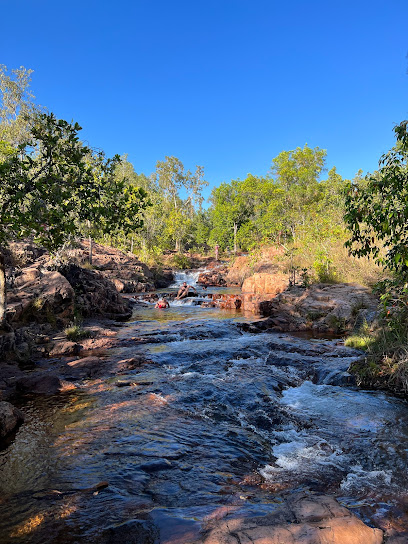
Magnetic Termite Mounds
Explore the spectacular Magnetic Termite Mounds in Litchfield National Park, a stunning natural wonder showcasing termite engineering and the beauty of the Northern Territory.
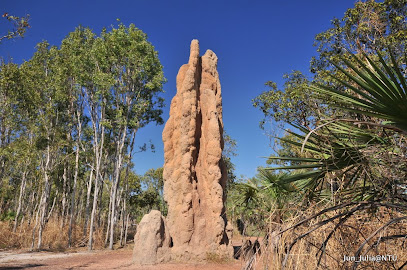
Wangi Falls
Discover the breathtaking beauty of Wangi Falls, a hidden gem in Litchfield National Park, perfect for swimming, hiking, and enjoying nature's tranquility.

Litchfield Park Adventures
Explore the breathtaking beauty of Litchfield National Park with Litchfield Park Adventures, offering thrilling activities and scenic landscapes for every traveler.

Litchfield Banyan Tree Resort
Discover Litchfield Banyan Tree Resort, your perfect retreat for adventure and relaxation in the heart of Northern Territory's breathtaking landscapes.
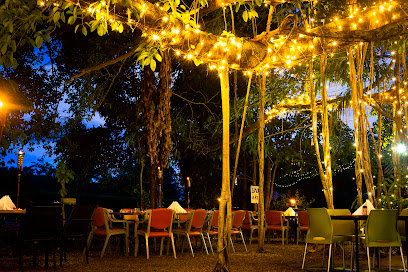
Litchfield Tourist Park
Discover the natural beauty and adventure at Litchfield Tourist Park, your gateway to the stunning landscapes and rich wildlife of Australia's Northern Territory.

Zebra Stone
Explore the geological marvels of Zebra Stone in Litchfield Park, a science museum with stunning rock formations, a cozy café, and camping grounds.

Litchfield Safari Camp
Experience the essence of the Australian outback at Litchfield Safari Camp, your gateway to breathtaking landscapes and unforgettable adventures.

Lost City Rock Formations
Uncover the breathtaking Lost City Rock Formations in Litchfield Park, a captivating natural wonder that showcases stunning geological beauty.

Wangi Falls Camping Area
Discover the serenity of Wangi Falls Camping Area in Litchfield National Park, a perfect escape for nature lovers and adventurers.

Finke Gorge National Park
Discover the breathtaking beauty of Finke Gorge National Park, where ancient landscapes and rich Indigenous culture come together in the heart of Australia.

Tjaetaba Falls
Experience the natural beauty and tranquility of Tjaetaba Falls in Litchfield National Park, a must-visit destination for nature lovers and adventure seekers.

Sandy Creek Falls
Explore Sandy Creek Falls in Litchfield Park: a natural wonder featuring stunning waterfalls, lush scenery, and perfect spots for relaxation and adventure.

Unmissable attractions to see
Crocosaurus Cove
Experience the thrill of interacting with Australia's largest saltwater crocodiles at Crocosaurus Cove, a unique wildlife attraction in Darwin City.

Territory Wildlife Park
Immerse yourself in the beauty of Australia’s wildlife at Territory Wildlife Park, a stunning blend of nature, education, and adventure.

Berry Springs Nature Park
Explore Berry Springs Nature Park: A serene oasis in the Northern Territory filled with lush landscapes, wildlife, and crystal-clear swimming holes.

Litchfield Park Adventures
Discover the beauty of Litchfield National Park with guided tours, fishing adventures, and unforgettable nature experiences in Australia's Northern Territory.

Litchfield Banyan Tree Resort
Discover the beauty of Litchfield Banyan Tree Resort, where adventure meets relaxation in the heart of Northern Territory.

Litchfield Tourist Park
Discover the breathtaking landscapes and unique wildlife of Litchfield Tourist Park, a must-visit national park in Australia’s Northern Territory.

Zebra Stone
Discover the beauty of geology at Zebra Stone, a unique science museum in Litchfield Park, perfect for families and curious minds alike.

Wangi Falls Camping Area
Discover the enchanting Wangi Falls Camping Area in Litchfield National Park, where stunning waterfalls and lush landscapes await outdoor enthusiasts.

Sandy Creek Falls
Experience the breathtaking beauty of Sandy Creek Falls, a natural wonder in Litchfield Park that captivates all who visit with its stunning waterfalls and lush surroundings.

Upper Cascades
Discover the enchanting Upper Cascades in Litchfield National Park, where stunning waterfalls and serene swimming spots await every nature lover.

NT Adventure Park
Discover the thrill of nature at NT Adventure Park, where adventure meets the breathtaking landscapes of the Northern Territory.
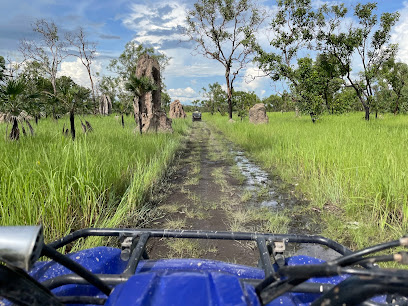
Surprise Creek
Explore the natural beauty of Surprise Creek in Litchfield Park, a serene oasis perfect for nature lovers and outdoor enthusiasts alike.

Sandy Creek Campsite
Experience the natural beauty and tranquility of Tjaynera Falls Campground, a hidden gem in Litchfield National Park, perfect for outdoor enthusiasts.
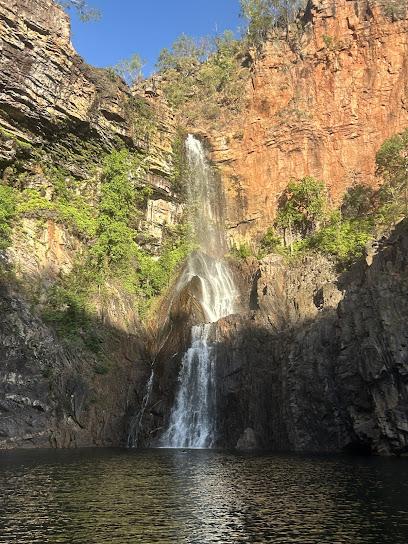
Leaning Tree Lagoon Nature Park
Discover the natural beauty of Leaning Tree Lagoon Nature Park, a tranquil escape in the Northern Territory, perfect for wildlife enthusiasts and nature lovers.

Batchelor Museum
Discover the rich cultural heritage of Batchelor at the Batchelor Museum, a must-visit attraction in the Northern Territory showcasing local history.

Essential places to dine
Tim's Surf & Turf
Experience exceptional seafood and steak at Tim's Surf & Turf in Darwin City—a culinary haven showcasing local flavors.

Litchfield Banyan Tree Resort
Experience nature's beauty at Litchfield Banyan Tree Resort – your gateway to adventure near Litchfield National Park.

Litchfield Tourist Park
Experience nature's beauty at Litchfield Tourist Park - your gateway to adventure in Australia's stunning Northern Territory.

Zebra Stone
Explore Zebra Stone: A unique science museum showcasing stunning geological wonders amidst nature's beauty.

Litchfield Outback Resort
Experience adventure and relaxation at Litchfield Outback Resort, your gateway to the stunning landscapes of Northern Territory's Litchfield National Park.

Rum Jungle Tavern
Discover Rum Jungle Tavern: A vibrant bar in Batchelor offering great food, drinks, and live music near Litchfield National Park.

Lil'Ripper Cafe, Bar & Bistro
Experience the vibrant flavors of Australia at Lil'Ripper Cafe & Bistro in Batchelor - where good food meets great company!

Litchfield Pub
Experience authentic Northern Territory hospitality at Litchfield Pub—where great food meets local culture amidst stunning landscapes.
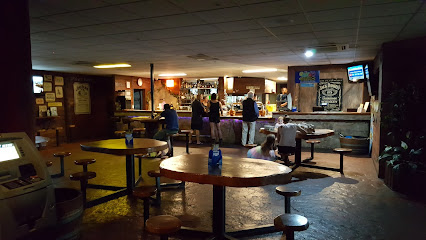
Pandanus on Litchfield
Discover comfort amidst nature at Pandanus on Litchfield - your gateway to stunning waterfalls and diverse wildlife.

Litchfield Cafe
Discover tranquility at Litchfield Cafe - where quality coffee meets stunning natural beauty near Wangi Falls.

Wangi Falls Cafe
Discover Wangi Falls Cafe - where delightful meals meet breathtaking views in Litchfield National Park.

Rum Jungle Bungalows
Discover tranquility and comfort at Rum Jungle Bungalows, your perfect retreat in Australia's breathtaking Northern Territory.

Markets, malls and hidden boutiques
Litchfield National Park
Explore Litchfield National Park: a stunning Australian escape with waterfalls, wildlife, and breathtaking landscapes in the heart of the Northern Territory.

Florence Falls Waterhole
Experience the stunning Florence Falls Waterhole, a natural oasis in Litchfield National Park, perfect for swimming, hiking, and enjoying nature's beauty.

Buley Rockhole (car park)
Experience the enchanting beauty of Buley Rockhole, a natural oasis in Litchfield Park, perfect for swimming and relaxation amid stunning scenery.

Wangi Falls
Discover the breathtaking beauty of Wangi Falls in Litchfield National Park—a natural oasis perfect for relaxation and exploration.

Litchfield Tourist Park
Explore Litchfield Tourist Park, a serene camping ground in Northern Territory, perfect for adventure seekers and nature lovers alike.

Zebra Stone
Explore the fascinating Zebra Stone science museum and café in Litchfield Park, a unique destination for geology enthusiasts and nature lovers.

Litchfield Outback Resort
Discover the breathtaking beauty and modern comforts at Litchfield Outback Resort in Australia’s Northern Territory, perfect for your next adventure.

Wangi Falls Camping Area
Experience nature's beauty at Wangi Falls Camping Area, where adventure meets tranquility in Litchfield National Park.

Berry Springs Shopping Village
Discover local crafts, culinary delights, and a vibrant atmosphere at Berry Springs Shopping Village in the Northern Territory.
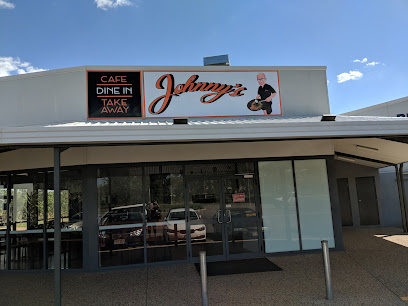
Country Store
Experience the charm of the Country Store in Adelaide River, a delightful grocery store filled with local goods and a taste of Northern Territory culture.

Litchfield Pub
Explore the local flavors and relaxing ambiance at Litchfield Pub, a unique destination in Darwin River perfect for every traveler.
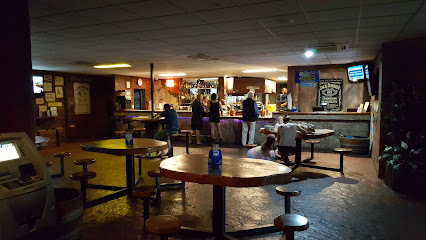
Tjaetaba Falls
Discover the beauty of Tjaetaba Falls, a breathtaking vista point in Litchfield National Park, ideal for swimming and experiencing nature's wonders.

Sandy Creek Falls
Experience the breathtaking beauty of Sandy Creek Falls in Litchfield National Park, a perfect destination for nature lovers and adventure seekers.

Tolmer Falls
Experience the breathtaking beauty of Tolmer Falls in Litchfield National Park, a must-visit destination for nature lovers and adventure seekers alike.

Kin Coffee & Goods Litchfield
Discover the cozy charm and exceptional flavors at Kin Coffee & Goods in Rakula, Northern Territory - your perfect cafe escape.

Essential bars & hidden hideouts
Shenannigans
Discover Shenannigans, a lively Irish pub in Darwin City boasting great food, drinks, and unforgettable live entertainment.

Berry Springs Tavern
Discover Berry Springs Tavern, a vibrant pub offering delicious local cuisine and refreshing drinks in the stunning Northern Territory.

The Precinct
Discover The Precinct: A lively pub and restaurant in Darwin City, offering delicious food, vibrant events, and a taste of local culture.

Humpty Doo Hotel
Discover local flavors and vibrant atmosphere at Humpty Doo Hotel, the heart of Northern Territory's dining and entertainment scene.

Airport Tavern
Discover the Airport Tavern in Jingili: a lively pub experience with delicious food and drinks, perfect for travelers and locals alike.

The Deck Bar
Experience the vibrant atmosphere of The Deck Bar in Darwin City, where live music meets delicious food and drinks.

Noonamah Tavern
Discover Noonamah Tavern, the heart of Northern Territory's pub culture, offering delectable steaks, local brews, and an inviting atmosphere.
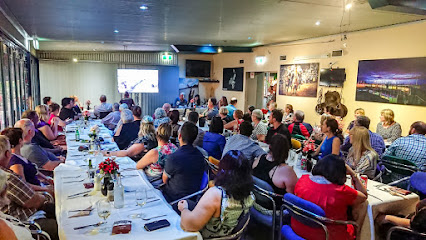
Darwin River Tavern
Experience the charm of the Northern Territory at Darwin River Tavern, a cozy pub with great food, drinks, and stunning natural views.

Litchfield Banyan Tree Resort
Experience the enchanting Litchfield Banyan Tree Resort, a perfect blend of nature, relaxation, and adventure in Northern Territory, Australia.

Stone House Wine Bar & Kitchen
Experience the vibrant atmosphere and exquisite flavors at Stone House Wine Bar & Kitchen, a top destination for wine lovers in Darwin City.

Humpty Doo Tavern
Experience the lively atmosphere and diverse menu at Humpty Doo Tavern, the go-to sports bar and bistro in Northern Territory.

Charlie's of Darwin
Experience the vibrant nightlife at Charlie's of Darwin, a unique cocktail bar and distillery that offers expertly crafted drinks and a lively atmosphere.

The Trader Bar
Experience the vibrant cocktail culture at The Trader Bar, where innovative drinks and a chic atmosphere await in the heart of Darwin City.

Litchfield Outback Resort
Discover the charm of Litchfield Outback Resort, where adventure meets relaxation in the heart of Australia's Northern Territory.

303. BAR Adelaide River Inn
Discover the lively atmosphere and local flavors at the 303. BAR Adelaide River Inn, your perfect stop in the Northern Territory.
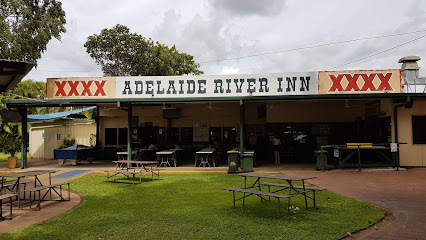
Local Phrases about Litchfield National Park
-
- HelloG'day
[G'day] - GoodbyeSee ya mate
[See ya mate] - YesYeah
[Yeah] - NoNah
[Nah] - Please/You're welcomePlease/No worries
[Please/No worries] - Thank youCheers mate
[Cheers mate] - Excuse me/SorrySorry mate
[Sorry mate] - How are you?How ya goin'?
[How ya goin'?] - Fine. And you?Not bad. You?
[Not bad. You?] - Do you speak English?You speak English?
[You speak English?] - I don't understandNo idea mate
[No idea mate]
- HelloG'day
-
- I'd like to see the menu, pleaseMenu please
[Menu please] - I don't eat meatNo meat for me
[No meat for me] - Cheers!Cheers mate!
[Cheers mate!] - I would like to pay, pleaseBill please
[Bill please]
- I'd like to see the menu, pleaseMenu please
-
- Help!Help!
[Help!] - Go away!Bugger off!
[Bugger off!] - Call the Police!Police!
[Police!] - Call a doctor!Doctor!
[Doctor!] - I'm lostLost mate
[Lost mate] - I'm illSick mate
[Sick mate]
- Help!Help!
-
- I'd like to buy...I wanna buy...
[I wanna buy...] - I'm just lookingJust browsing
[Just browsing] - How much is it?How much?
[How much?] - That's too expensiveToo pricey
[Too pricey] - Can you lower the price?Can you do a deal?
[Can you do a deal?]
- I'd like to buy...I wanna buy...
-
- What time is it?What's the time?
[What's the time?] - It's one o'clockIt's one
[It's one] - Half past (10)Half past ten
[Half past ten] - MorningMornin'
[Mornin'] - AfternoonArvo
[Arvo] - EveningEvenin'
[Evenin'] - YesterdayYesty
[Yesty] - TodayToday
[Today] - TomorrowTomorra
[Tomorra] - 1One
[One] - 2Two
[Two] - 3Three
[Three] - 4Four
[Four] - 5Five
[Five] - 6Six
[Six] - 7Seven
[Seven] - 8Eight
[Eight] - 9Nine
[Nine] - 10Ten
[Ten]
- What time is it?What's the time?
-
- Where's a/the...?Where's the...?
[Where's the...?] - What's the address?Address?
[Address?] - Can you show me (on the map)?Show me on the map?
[Show me on the map?] - When's the next (bus)?Next bus?
[Next bus?] - A ticket (to ....)Ticket to...
[Ticket to...]
- Where's a/the...?Where's the...?
History of Litchfield National Park
-
Litchfield National Park is the traditional land of the Koongurrukun, Mak Mak Marranunggu, Werat, and Waray Aboriginal people. These Indigenous communities have a deep connection to the land, which is evident in the numerous sacred sites and rock art scattered throughout the park. Their traditional knowledge of the flora and fauna has been passed down through generations.
-
European exploration of the area began in the mid-19th century. The most notable explorer was Frederick Henry Litchfield, after whom the park is named. In 1864, Litchfield led an expedition that discovered the fertile lands and rich resources of the region. His exploration opened up the area for further settlement and mining activities.
-
In the late 19th and early 20th centuries, tin mining became a major activity in the area. The Blyth Homestead, built in 1929, serves as a relic of this era, providing a glimpse into the challenging lives of the early settlers and miners. The remnants of tin mines and the associated infrastructure can still be found within the park.
-
During World War II, the region was strategically important for the Allied forces. The park contains remnants of military activity, including airstrips and camps. The Bamboo Creek Airstrip is one of the notable sites from this period, highlighting the park's role in the broader wartime efforts in Northern Australia.
-
Litchfield National Park was officially declared in 1986, with the aim of protecting its unique natural and cultural heritage. The establishment of the park marked a significant shift towards conservation and tourism, providing a sanctuary for the region's diverse ecosystems and a place for visitors to appreciate its beauty and history.
-
Since its establishment, Litchfield National Park has become one of the premier tourist destinations in the Northern Territory. The development of visitor facilities, including campgrounds, walking trails, and informative signage, has made the park accessible while preserving its natural and historical integrity. Notable attractions include the Florence Falls, Wangi Falls, and the Magnetic Termite Mounds.
Litchfield National Park Essentials
-
Litchfield National Park is located in the Northern Territory of Australia, approximately 100 kilometers southwest of Darwin. The most convenient way to reach the park is by car. From Darwin, take the Stuart Highway south and then turn onto the Batchelor Road. The journey takes about 1.5 hours by road. Alternatively, you can join an organized tour from Darwin, which often includes transportation and guided activities.
-
Once inside Litchfield National Park, the primary mode of transportation is by car. The park has well-maintained roads that connect major attractions. If you do not have your own vehicle, you can rent a car in Darwin. Some tour operators also offer day trips and multi-day tours, providing transportation and guided experiences. There are no public transport services within the park, so having a vehicle is essential for exploring at your own pace.
-
The official currency in Australia is the Australian Dollar (AUD). Credit cards are widely accepted in Darwin and at major tourist facilities. However, it is advisable to carry some cash, especially for entry fees, small purchases, or in areas with limited card payment facilities. ATMs are available in Darwin, but there are no banking facilities within Litchfield National Park itself.
-
Litchfield National Park is generally safe for tourists, but it is important to take standard precautions. Be cautious of wildlife, including crocodiles in waterways and insects. Always follow park guidelines and signs. There are no specific high-crime areas targeting tourists within the park, but always secure your belongings and avoid leaving valuables in your vehicle. Stay hydrated and protected from the sun, especially during the hotter months.
-
In case of emergency, dial 000 for police, fire, or medical assistance. Litchfield National Park has limited mobile phone coverage, so it is advisable to inform someone of your travel plans. The nearest medical facilities are in Batchelor and Darwin. Always carry a first aid kit, plenty of water, and a map. For minor injuries, there are first aid stations located at popular spots within the park.
-
Fashion: Do wear comfortable, weather-appropriate clothing and sturdy footwear. Sun protection is essential. Avoid wearing flashy jewelry or clothing that might attract wildlife. Religion: Respect indigenous sites and cultural practices. Do not climb on or disturb any sacred sites. Public Transport: As there is no public transport within the park, do use organized tours or car rentals responsibly. Greetings: Australians are generally informal; a simple 'hello' or 'g'day' is sufficient. Eating & Drinking: Do bring your own food and drinks, as facilities within the park are limited. Be sure to clean up after yourself to protect the natural environment.
-
To experience Litchfield National Park like a local, visit during the shoulder seasons (May to June and September to October) for fewer crowds and mild weather. Start your day early to enjoy the park's attractions before the heat sets in. Make sure to swim at Buley Rockhole and Florence Falls, but always check for crocodile warnings. Take a short hike to the Tolmer Falls lookout for stunning views. Pack a picnic and enjoy it at one of the designated areas. Engage with park rangers to learn more about the park's history, flora, and fauna.
Trending Landmarks in Litchfield National Park
-
George Brown Darwin Botanic Gardens
-
Florence Falls Waterhole
-
Buley Rockhole (car park)
-
Magnetic Termite Mounds
-
Wangi Falls
-
Litchfield Park Adventures
-
Litchfield Banyan Tree Resort
-
Litchfield Tourist Park
-
Zebra Stone
-
Litchfield Safari Camp
-
Lost City Rock Formations
-
Wangi Falls Camping Area
-
Finke Gorge National Park
-
Tjaetaba Falls
-
Sandy Creek Falls
Nearby Cities to Litchfield National Park
-
Things To Do in Lospalos
-
Things To Do in Baucau
-
Things To Do in Same
-
Things To Do in Suai
-
Things To Do in Bobonaro
-
Things To Do in Aileu
-
Things To Do in Gleno
-
Things To Do in Dili
-
Things To Do in Ermera
-
Things To Do in Alice Springs
-
Things To Do in Makassar
-
Things To Do in Port Douglas
-
Things To Do in Buka
-
Things To Do in Vanimo
-
Things To Do in Cairns










